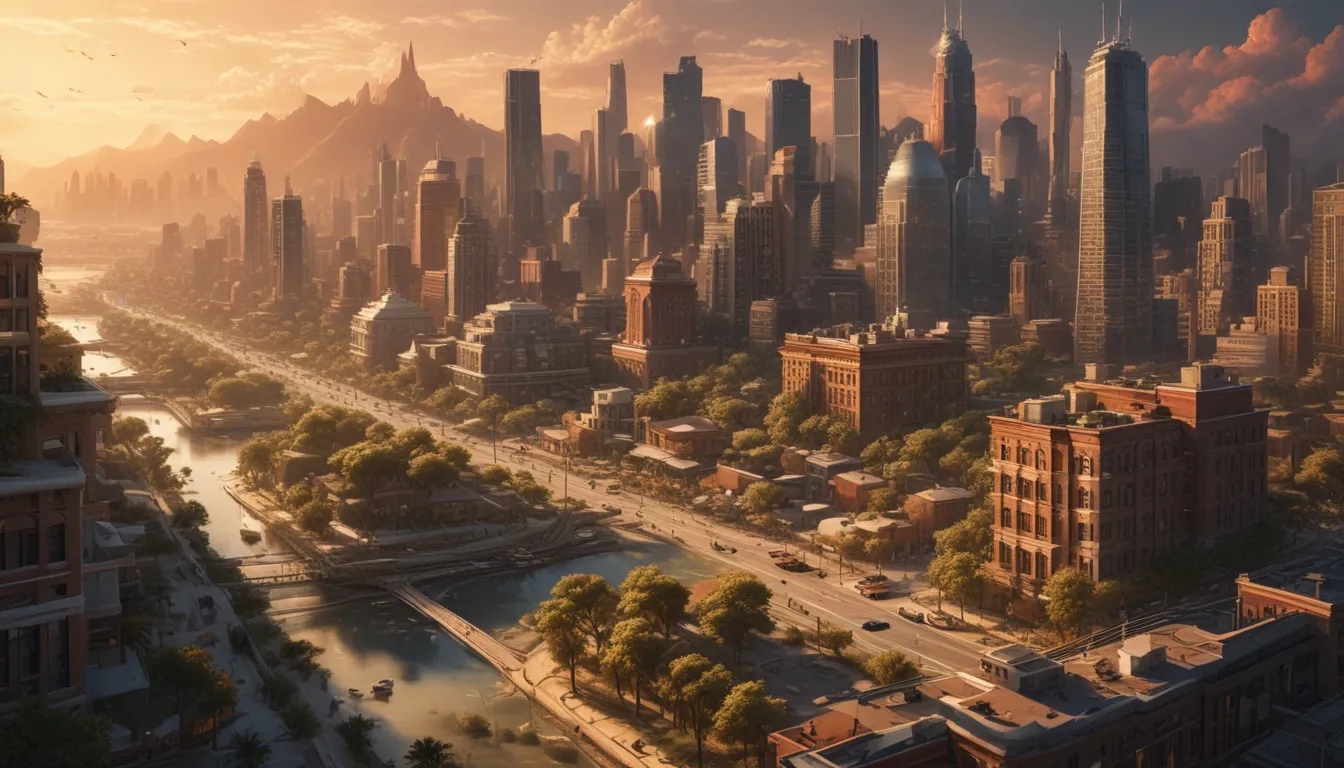A Note About Images: The images used in our articles are for illustration purposes only and may not exactly match the content. They are meant to engage readers, but the text should be relied upon for accurate information.
In urban areas around the world, the presence of heat islands poses a significant challenge. Heat islands are urban hotspots that experience significantly warmer temperatures compared to their surrounding rural areas. They are a result of human activities and the built environment, with factors such as concrete buildings, asphalt roads, and lack of vegetation contributing to the phenomenon. The impact of heat islands extends beyond just the temperature rise; it affects everything from human health to wildlife and the urban ecosystem.
In this article, we will delve into the world of heat islands and explore 20 extraordinary facts about this urban heat phenomenon. From the causes and effects to potential solutions, we will shed light on the challenges posed by heat islands and provide valuable insights into how they affect our cities and lives. By understanding these facts, we can work towards creating cooler, healthier, and more sustainable urban environments.
Key Takeaways:
- Heat islands are urban areas that can raise temperatures by up to 10°F compared to nearby rural areas, impacting human health, wildlife, and energy consumption.
- Strategies like cool roofs, green spaces, and reflective pavements can help cities combat heat islands and create cooler, more eco-friendly environments.
Causes and Effects of Heat Islands
Staggering Temperature Differences
One of the most remarkable facts about heat islands is the significant temperature difference they create between urban and rural areas. Temperatures in heat islands can be up to 10°F (5.6°C) higher than their surrounding regions, leading to a range of consequences for the environment, human health, and energy consumption.
Intensified During Heatwaves
Heat islands exacerbate the effects of extreme heat events, such as heatwaves. High-pressure systems trap hot air in the urban environment, intensifying the heat island effect and creating challenging conditions for the urban population.
Urban Infrastructure Materials
The materials used in urban infrastructure, like concrete and asphalt, absorb and retain heat, contributing to the thermal buildup in urban areas. This accumulation of heat leads to elevated temperatures, creating the heat island effect.
Densely Populated Cities
Heat islands are more prevalent in densely populated cities where the concentration of buildings, vehicles, and industrial activities generates excess heat. This crowding limits natural cooling processes, further elevating temperatures in urban areas.
Importance of Trees and Vegetation
Green spaces play a crucial role in mitigating the effects of heat islands. Trees and vegetation provide shade, cool the air through evapotranspiration, and reduce overall temperatures, helping to counteract the heat island effect.
Impact on Air Pollution
Heat islands can exacerbate air pollution as higher temperatures react with pollutants, leading to increased smog formation and poorer air quality. This has negative consequences for both human health and the environment.
Solutions to Combat Heat Islands
Implementing Cool Roof Technologies
Dark-colored roofs and pavements absorb more heat, exacerbating the heat island effect. By using lighter-colored materials or cool roof technologies, cities can reduce heat absorption and mitigate the impact of heat islands.
Promoting Green Infrastructure
Green roofs and rooftop gardens help combat heat islands by reducing heat absorption and providing insulation. These vegetated areas improve energy efficiency in buildings, contribute to urban cooling, and enhance the city’s overall sustainability.
Using Cool Pavement Technologies
Cool pavement technologies, such as special reflective coatings, can reduce surface temperatures in urban areas. By reflecting sunlight and minimizing heat absorption, these pavements help lower overall temperatures and combat the heat island effect.
Sustainable Urban Planning
Efforts to mitigate heat islands require sustainable urban planning that integrates green spaces, cool roofing materials, and reflective surfaces. Creating resilient cities means prioritizing heat mitigation strategies and promoting urban design that enhances ecosystem resilience.
Impacts of Heat Islands on Society and the Environment
Vulnerable Populations at Risk
The elderly, children, and individuals with pre-existing health conditions are more susceptible to heat-related illnesses in heat islands. Increased temperatures put these vulnerable populations at greater risk of heatstroke and other heat-related ailments.
Urban Water Cycle Disruption
Heat islands affect the urban water cycle by increasing stormwater runoff due to the lack of natural permeable surfaces. This contributes to urban flooding and water pollution, impacting both the environment and urban infrastructure.
Economic Implications
Heat islands have economic implications for cities, including increased energy demand for air conditioning, reduced labor productivity, and infrastructure damage. These factors can result in substantial costs that cities must bear.
Impact on Wildlife and Biodiversity
The heat island effect can impact wildlife and biodiversity as native plant and animal species struggle to adapt to higher temperatures and altered ecosystems. This disruption can have long-term consequences for urban biodiversity.
Conclusion: Creating Cool, Sustainable Cities
In conclusion, heat islands pose significant challenges to our cities and the environment, impacting human health, wildlife, and urban ecosystems. By implementing strategies to combat heat islands, such as green infrastructure, cool roofing materials, and reflective pavements, cities can create cooler, healthier, and more sustainable urban environments. It is crucial to prioritize the well-being of our communities and work together to address the impacts of heat islands. Through collective efforts, we can make a difference and create a more resilient and cool environment for future generations.
FAQS
- What is a heat island?
-
A heat island refers to an urban or metropolitan area that experiences significantly higher temperatures than its surrounding rural areas due to human activities and the built environment.
-
How do heat islands form?
-
Heat islands form due to factors such as absorption and re-radiation of heat by buildings and pavement, lack of vegetation, and limited air circulation in urban areas.
-
What are the impacts of heat islands?
-
The impacts of heat islands include increased energy consumption, higher cooling costs, compromised human health, reduced air quality, and negative effects on water bodies and wildlife.
-
Can heat islands be mitigated?
-
Yes, heat islands can be mitigated through strategies like implementing green roofs and walls, creating urban forests, using cool roofing materials, and promoting the use of reflective surfaces.
-
Are heat islands related to climate change?
- Yes, heat islands and climate change are interconnected as heat islands contribute to higher localized temperatures, exacerbating the effects of climate change and impacting the surrounding environment and communities.
Join us in the Fight Against Heat Islands
Our commitment to delivering valuable and informative content drives us to explore and share insights on critical issues like heat islands. By understanding the causes, effects, and solutions to combat heat islands, we can work together to create cooler, healthier, and more sustainable cities. Join us in the fight against heat islands by implementing green infrastructure, promoting sustainable urban planning, and prioritizing the well-being of our communities. Together, we can make a difference and build a more resilient and cool environment for generations to come.






